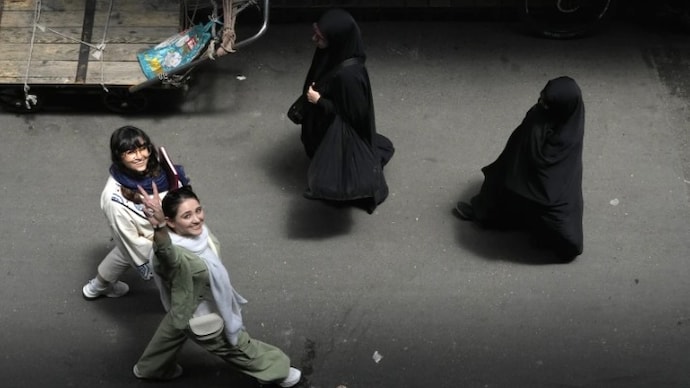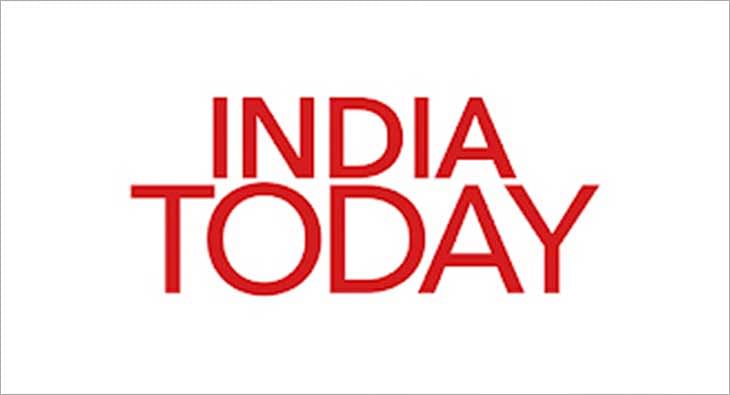On September 16, 2022, Mahsa Amini died in the custody of Iran's moral police after she was arrested for not following a strict Islamic dress code. Her death led to an outrage and now, two years later, 34 Iranian women prisoners have gone on a hunger strike and dozens are flouting the hijab rule to mark her death anniversary.

An Iranian woman flouting Iran's hijab rule flashes a victory sign in Tehran, Iran, on June 13. Dozens of women are ditching the hijab to mark the death anniversary of Mahsa Amini. (Image: AP)
'Jin, Jiyan, Azadi'. Woman, Life, Freedom. This slogan became the chorus of the movement sparked by the death of Mahsa Amini in 2022. Ali, the 22-year-old girl, died in custody after she defied the strict Islamic dress code and was jailed by the Shia nation's morality police.
Her death led to a larger protest against the theocratic regime of Ayatollah Ali Khamenei, the Supreme Leader. On the second anniversary of her death, the echoes of the 'women, life and freedom' slogan can still be heard, as Mahsa Amini's parents have been prohibited from holding an annual meeting in their daughter's memory. Her parents are forced under house arrest. Even the Aichi Cemetery in the city of Saqqez, where Amini was buried, has been blocked. The city had doubled down on its security, reported Medya News, a Kurdish news outlet.
Despite all the cautionary measures to avoid outrage, many women remembered Mehsa. Several Iranian women took a stroll on the streets of Tehran with their hair wide open, even after sunset, in defiance, in Ali's memory, and the remainder of the massive revolutionary protests in Iran shook that authority of the Ayatollah.
WOMEN STROLL ON THE STREETS OF TEHRAN WITHOUT HIJAB
In Tehran's northern suburbs of the wealthy population and working-class locales in Tehran's southern area, women are being seen without hijabs. In major parks of the city, women are seen with their heads uncovered in the daylight and even after sunlight.
Many videos are being circulated where city tours of the streets are being recorded for those living in rural areas or outside Iran. In the videos of the hustling and bustling towns, women without hijabs are also seen.
This would have shocked anyone after the 1979 Islamic Revolution reinforced Islamic social values for women. But now it is commonplace after the women's life freedom movement.
“My quasi-courage for not wearing scarves is a legacy of Mahsa Amini, and we have to protect this as an achievement,” told a 25-year-old student at Tehran Sharif University, who only revealed her first name, Azadeh, to The Associated Press.
“She could be at my current age if she did not pass away," she added.
WOMEN PRISON INMATES ON HUNGER STRIKE IN IRAN
Many women in the Evin prison in Tehran have also taken on a hunger strike on the second anniversary of Amini's death and of the Woman, Life and Freedom movement, according to a report by Iran Wire.
These 34 prison inmates aim to "join the protesting people of Iran against the government's repressive policies" through their hunger strike.
Some of them are prominent Iranian activists, such as Narges Mohammadi, Verisheh Moradi, Mahbobeh Rezaei, and Parivash Muslimi.
This hunger strike is a part of ongoing protests within Iran. But there are risks with this disobedience.
There are videos of women being injured and harassed for not wearing a headscarf.
The Iranian government has also targeted businesses where women do not wear hijabs. Surveillance cameras look for women who are not covered to impose a fine.
Even aerial drones are being used to monitor the 2024 Tehran Book Fair and Kish Island for uncovered women, the UN said.
While the government is not acknowledging the increase in the number of women not wearing hijabs, there are other signs of change.
CRACKDOWN ON SOCIAL MEDIA POSTS: ARRESTED, WHIPPED
Alef, a woman who posted a photo on social media with her hair flowing freely said, “I didn’t really care enough to hide who I am or where the photo was taken".
"I wanted to say, we exist," she added.
The picture was seen by the authorities, and Alef was arrested. She was taken to an unknown location where she was put in solitary confinement for around two weeks. Guards even went through her social media posts and photos.
“A male officer told me to take off my coat and lie down,” Alef said about her arrest to the BBC.
“He was holding a black leather whip and started hitting me all over my body. It was very painful, but I didn’t want to show weakness.”
Iranian police shot 31-year-old Arezou Badri, leaving her paralysed, after she fled an attempted vehicle impoundment related to a headscarf violation.
A month after Mahsa Amini’s death, Kosar Eftekhari was shot by a riot officer—first in the genital area, then in the eye, causing blindness. The attack, filmed and posted online, intensified her surveillance and led to her conviction for social media posts, including images without her hijab. Sentenced to over four years in prison and banned from digital use, Kosar fled to Germany. There, she now advocates for Iranian women and testified to the UN’s Fact-Finding Mission on Iran about "crimes against humanity," while Iranian authorities deny targeting protesters.
WOMEN LIFE FREEDOM MOVEMENT IN TEHRAN
This defiance comes even when the United Nations has described as "expanded repressive measures and policies" under Iran's theocratic rule to punish any demonstrations.
Although Iran's new reformist President Masoud Pezeshkian promised an end to the harassment of women by the morality police. But the ultimate authority in Iran still lies with the 85-year-old Supreme Leader Ayatollah Ali Khamenei, who in the past stated “unveiling is both religiously forbidden and politically forbidden.”
In Iran, hijab has been a religious and a political symbol. But after the death of Iranian President Ebrahim Raisi, the strict regulations are being eased in Iran.
“I think the current peaceful environment is part of the status after Pezeshkian took office,” Hamid Zarrinjouei, a 38-year-old bookseller told news agency AP. “In some way, Pezeshkian could convince powerful people that more restrictions do not necessarily make women more faithful to the hijab.”
"It’s like the seeds of a flower. Even if a flower withers or dries out, its seeds go on and flower elsewhere,” Alef tells the BBC about the Women, Life and Freedom movement.
Published By:
Priyanjali Narayan
Published On:
Sep 16, 2024

 2 days ago
2 days ago


















